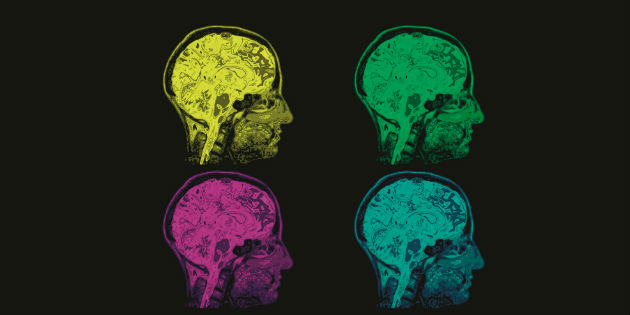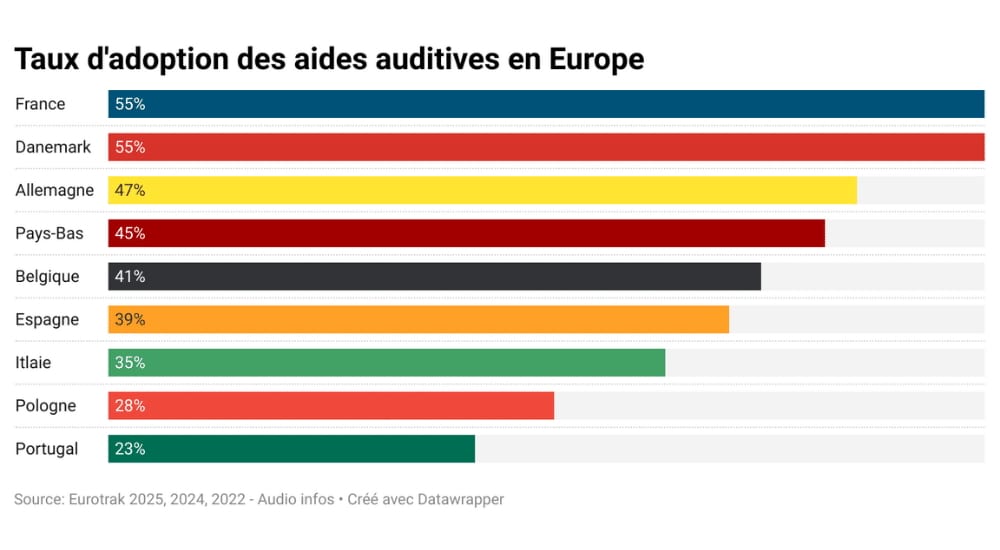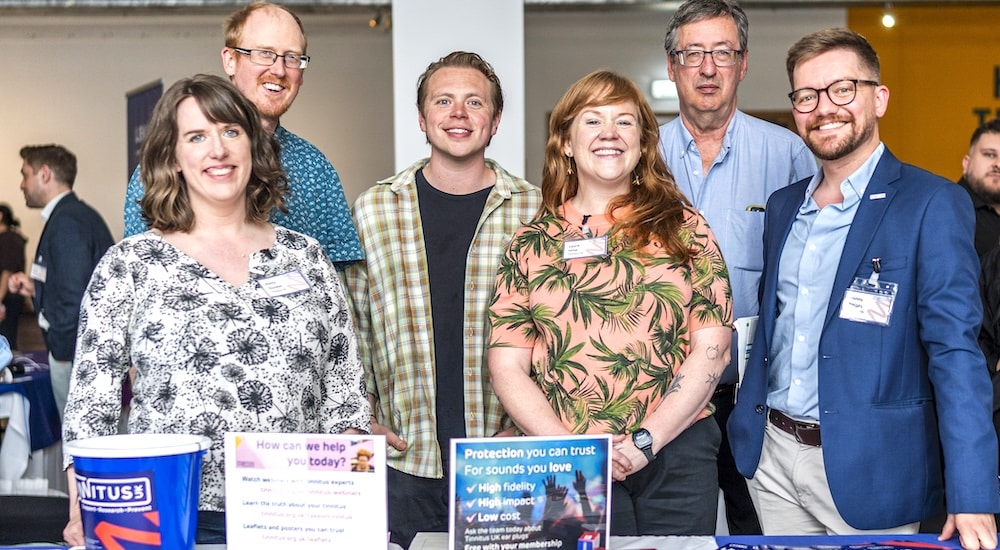"We want to understand how people cope with tinnitus”
Tinnitus
Principal investigatorat the Auditory CognitiveNeuroscience Lab (Departmentof Speech and HearingScience at the university ofIllinois Urbana-Champaign,US), Dr. Fatima T. Husain hasbeen conducting studieson hearing disorderslike tinnitus

, usingcomputational modeling andbrain imaging. She has conceded an interview toAudiology Worldnews in which she exposed how brain imaging is helping to betterunderstand tinnitus and what are the main obstacles for neuroimaging studies intinnitus patients, like the placebo effect.
From the researcher point of view, what are thespecificities of the field of tinnitus?
Tinnitus is confusing for everybody. It’s confusing for thepatients, for the clinicians and for the researchers. Becauseyou have something that only you and nobody else canhear. And as an observer, I have to believe you. So, how dowe know when someone has tinnitus? If you have bloodpressure, I can measure it, if you have diabetes, I can alsomeasure it. And there are objective ways to do that. And thisis the root of confusion when it comes to tinnitus: the lack of method to measure it objectively. So, we, the researchers,have to be very careful about the way we study tinnitus inorder to not add to the confusion!
Brain imaging is the only non-invasive way to objectivelyassess tinnitus because we have no other test we can run inthe clinics or labs. Psychoacoustics measures, that is playingsounds aimed at the characterization of loudness and pitchby the patient, are mostly subjective methods, providingvariable results, and I may need to test you many times to getreliable results.
What is the big picture oftinnitus patients and brainimaging?
What we’re beginning to seeis that different regions ofthe brain activate differentlywhen we have tinnitus. Wecan see that when patientsare doing a task. Thosewho don’t have tinnituscan react to a sound, but ifyou have tinnitus, you reactdifferently. In that senseyour reactions can also beshown in brain imaging. Thesecond thing we’re lookingat is functional connectivity, especially during the restingstate. That means looking at connections between brainregions, if they are “talking” to each other, and how they aretalking to each other. With tinnitus, normal connections mayhave changed.
Does brain imaging help in assessing tinnitusvariability?
Measuring variability in tinnitus severity is important, becausesome people are steady, while others are naturally variable.Depending on when you test them you can have a lot ofchanges without any intervention. In the future, we shouldhave a better handle on this variability, and actually brainimaging will be helpful. Presently, we are trying to scanthe same person twice, one week apart, and we measuretheir tinnitus reaction. Such resting state studies have beenfound to be reliable in the healthy population and we wantto know if we can find replicable data in tinnitus populationtoo. If we find that certain tinnitus patients are more reliablethan others. Is it due to some change in their psychologicalreaction? Maybe within the week, you add news from yourboss. That can happen, maybe the night before you couldn’tsleep well. Anything can change your tinnitus and we’retrying to understand that better. This is a complex topic, andbecause it is complex, we owe to the field and the patients tobe as careful as possible.
Can neuroimaging provide us withobjective information, like pitch orloudness, or is it only about psychologicalcharacteristics?
Currently, I don’t think you can see muchabout pitch or loudness. Even though somestudies are showing that a little bit, it isnot conclusive. I don’t believe our imagingcan show the difference between having atinnitus pitch of 6 kHz or having a pitch of7 kHz. What is more prominent, or easiest tosee, is whether I am bothered or not by it. So, in my opinion,the small differences between the characteristics of soundare not easily imaged. When we’re looking at the brain, we’relooking at volumes of 3 mm3. That’s a lot of tissue, withhundreds of thousands of neurons, and because they are allresponding to similar sounds, it is difficult to tell differencesto slightly different tones. When you consider psychologicalreactions, instigated by some tasks, these are easier to imagewith our tools. There may be a difference for the pitch but ourtools are not sufficiently sensitive yet to see it.
What about the interaction of hearing loss in tinnitus?
It is another problem when we’re talking about measuringtinnitus physical characteristics. Patients with hearing lossmay have difficulty matching the external sound with theirinternal one because they cannot hear the external soundvery well. Also, in terms of brain imaging what happenswhen you have hearing loss and tinnitus is that therechanges to the connections of the networks that may bedue to hearing loss, and not to tinnitus. So we have to bevery careful to attribute these changes correctly. In terms ofpitch, it depends on topographic organization of responsesto tones, and this organization is compromised when youhave hearing loss, regardless of tinnitus. In my opinion,earlier studies that looked at tonotopic reorganization andconcluded it was a causative factor of tinnitus, whereas it may be a consequence of hearing loss. It maybe a factorfor developping tinnitus but I don’t think it is a factor fortinnitus to become chronic or persistent. Pitch and loudnessperception may be happening in the brainstem, or in somesubcortical regions, and we’re not so good at imaging theseregions. We probably need better tools to look at the smallstructures in the brainstem.
Why resting state functional connectivity is useful forstudying tinnitus?
People with constant tinnitus listen to the sound all thetime and therefore are in a different state than peoplewithout tinnitus. And this can be exploited with resting statestudies. We’re not having them doing anything, they are justlying there in the scanner and letting their mind wander…People with tinnitus have an extra sound and they maybe attending to the tinnitus which put them in a differentstate that somebody who does not have tinnitus. This is apure experiment in that sense and allows us to understandmany networks in the brain, those associated with hearing,attention, etc.

Your works also focus on the model of severity andhabituation…
When a person starts having tinnitus, after a few months,she/he may wonder if he has a tumor and go to a doctor.When the doctor rules out all other issues, some patientsaccept it, and others don’t, and keep looking for a solution.
Tinnitus patients may be keeping going to the audiologist,getting fitted with hearing aids, following therapies, maybeundergoing surgeries, and continue to be bothered bytinnitus. So this is what I want to understand. If you look atthe loudness of the tinnitus, it may be the same than in otherpeople, but the question is: what makes someone acceptit, and others not? Actually, 80% habituate to the sound,whereas 20% may not habituate. They report being anxious,depressed etc. We want to understand how people cope andhabituate to tinnitus. We’re doing brain imaging, so we cannow scan the individuals in different parts of the continuum ofseverity and understand it better.
So brain imaging allows to distinguish between peoplewho manage to cope and those who don’t?
Exactly. We are definitely finding differences. The results inour lab appear to be reliable if you account for severity or howbothered people are by their tinnitus and its duration. Oneof the reasons why the research results may be confusingacross different labs is about the duration of tinnitus (howmany years and months after its onset), and how have thepatient reacted to it.
There are also lots of networks in the brain. The attentionand emotional networks are compromised, because you’reattending to tinnitus too much, so you’re exhausted, whichleads to fatigue and concentration difficulties, and maybedepression signals. And it’s about feedback loops: I’mstressed, so my tinnitus is louder, and I get more stressedbecause it is louder. So that’s refl ected in brain imagingpatterns in the networks, and the connectionsand their activity. Both are changed.
In our studies we are finding changes in thedefault mode network. This network is moreactive at rest and it is good if it is more active.But we find that it is less active in those withtinnitus and even less active if you have hadtinnitus for a long time and if you have severetinnitus. One key player of the default modenetwork is the precuneus and its connectionsare compromised in tinnitus.
What is the future of brain imaging studiesin tinnitus patients and possible therapies?
I think in the future we will use brain imaging to identifydifferent subgroups in the larger, heterogeneous tinnituspopulation. We can use brain imaging to test therapiescarefully to see which therapy works with whichsubgroup. In the past different therapies have been triedwith limited success. But now, we can actually see whatis changing in the brain, it is a very powerful tool for us,researchers and clinicians to develop new therapies.With respect to therapies, two things to keep in mindare the placebo effect and how important counseling isfor effective management of tinnitus severity. Placeboeffect is strong. If I want to please my audiologist, ormy psychologist, I say that it’s all right even if it isn’t.Sometimes patients can be very isolated, nobodybelieves he has tinnitus and how much trouble itcauses to their daily life. Sometimes, because tinnitusis invisible, there is less sympathy within the familyand from the colleagues about the difficulties andthe challenges, so when they go to a doctor, or anaudiologist, they feel good, and they automaticallyreduce the annoyance, it doesn’t have to do withthe therapy or with the drugs. So counseling is veryimportant and people just feel well when somebodylisten to their problems.
Is placebo effect likely to interact in studies?
Yes, if we are not careful in having randomized controlledtrials. It is not always simple to create control conditions.It is easy to do with drugs, but not, for instance, withsome other therapies. As researchers are becoming moreaware about how counseling is important and shouldbe considered within the studies. So, in the case ofhearing aids, to control the situation (within-subject), youwould provide counseling for six months without fittingthem with hearing aids, but you cannot deny someonetreatment, which is unethical. Then you can have othercontrol group who doesn’t have tinnitus but is identical interms of hearing loss. It takes preparation, hard work andlot of money to run good clinical trials.
Read this on Audiology Worldnews ENT World Congress Special:
Source: Audiology Infos Brazil


